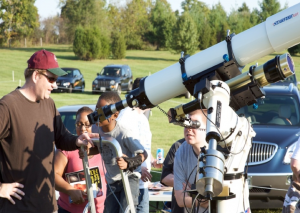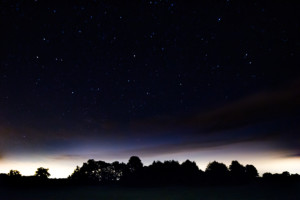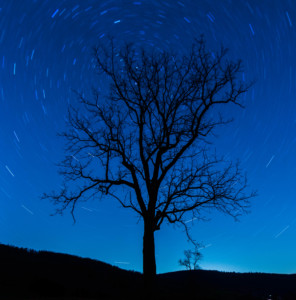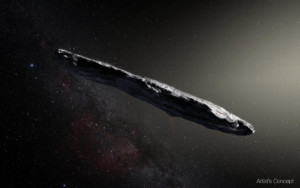Key information for official sites with agreements:
- Camp High Road is open unless specified on Camp High Road specific page
- C.M. Crockett is open only during periods specified on the Crockett specific page
- Meadowkirk observing requires explicit permission. See Meadowkirk page for details
- Sky Meadows State Park is open for vetted volunteers only unless posted on the Sky Meadows specific page
- Spruce Knob Mountain Center: See site specific page or contact site coordinator for availability
Head over to the Astronomy Day page for more information.

Event is confirmed! See you tonight!
RSVP here.
Join NOVAC members who will be on hand to share views of the night sky including Mars, star clusters, the Milky Way, and many other deep sky objects.
Activities during Astronomy Day will include a telescope meet and greet, solar observing, a guided sky tour, night sky observing, and other demonstrations.
Feel free to walk around and enjoy the views of objects through a variety of telescopes on the field. Please ask the owner before using a telescope. If you have young children, please watch them around expensive astronomical equipment. Remember, telescope mirrors are sensitive to cigarette smoke and bug spray. Pets should also not be brought onto the observing field.
No astronomy experience or equipment is necessary to attend. If you have your own equipment, feel free to bring them along, even if it’s just a pair of binoculars.
For lighting, cover a flashlight in red cellophane (the darker the better). Bring along water to keep hydrated and plan on staying the entire evening or as long as the weather allows. Please dim your vehicles headlights when arriving and departing.
Crockett Park charges $7 per vehicle if you’re not a Fauquier County resident. However the event itself is completely free. NOVAC members are admitted free upon presentation of a membership card (available from the members-only section of the website). If you’re not a member but would like to become one, you can join the club online and print your membership card in only a few minutes.
Note: Masks are required throughout the event. This event is also weather-dependent and may be cancelled because of significant cloud cover or precipitation.
Head over to the Astronomy Day page for more information.

RSVP here.
Members of the public are invited to view the wonders of the universe through the telescopes of NOVAC volunteers. You do not need to be a member of the club or own any astronomical equipment to attend. Masks are required and up to 10 visitors at a time are allowed around a single telescope.
Featured objects include various deep sky objects like star clusters, nebulae, and galaxies.
From 8pm until sunset (8:34pm) you can inspect different telescopes and other visual equipment on the field. Have a cosmic question? One of our astronomers will be happy to help you. After sunset be prepared to enjoy the wonders of the night sky!
After arriving at the main gate, take the first left into the gravel parking lot. There is additional parking up the road. There should be some telescopes setup in the nearby field. Please dim your headlights if you are arriving after dark and please do not drive onto the field unless you are a volunteer.
Dress warmly! Temperatures can still be cool during summer nights. Please check the weather forecast. For lighting, cover a flashlight in red cellophane (the darker the better). Bring along water to keep hydrated and plan on staying the entire evening or as long as the weather allows. Feel free to walk around and view the different telescopes on display but please ask the owner before using. Please monitor your children around expensive astronomical equipment. Remember, telescope mirrors are sensitive to cigarette smoke and bug spray. Finally, pets should not be brought onto the observing field unless they are service animals.
Note: This outdoor event is weather-dependent and may be cancelled because of significant cloud cover or precipitation.
Please read the C.M. Crockett Page for park details.

NOVAC supports this event by providing telescope views to visitors.
- Sky Meadows State Park (11012 Edmonds Ln.), behind the Mount Bleak House within the white fence.
- For individuals who are fully vaccinated face coverings and social distancing are no longer required. Individuals who are not yet fully vaccinated will be asked to continue face covering and social distancing procedures.

The discovery of ‘Oumuamua (1I/2019/U1) represented our first detection of a solar system object with an origin that was definitely outside of our solar system. Its name comes from Hawaiian meaning “first messenger from afar” yet deciphering its message has proved difficult and controversial. ‘Oumuamua was discovered by the Pan-STARRS telescope at the Haleakala Observatory in Hawaii on October 19, 2017, when it had already made its closest approach to the Earth on a hyperbolic orbit that would carry it back into the interstellar medium from which it came. Although currently classified as an interstellar comet, it has characteristics completely unlike any known comet. Its unusual shape, lack of a coma, and the fact that it exhibited non-gravitational acceleration has made its classification a complex problem. This talk will cover what is known about ‘Oumuamua and various proposals for its origin, including the suggestion that it is a product of alien technology.
Dr. Michael E. Summers
Sunday, June 13, 2021
7:30 PM to 9:00 PM EST
Online event
meet.google.com/osh-bcyd-gti
Monthly Meeting – Public Invited
Bio:
Dr. Michael E. Summers is Professor of Planetary Sciences and Astronomy at George Mason University. He has an undergraduate B.S. from Murray State University in Physics, Mathematics, and Russian, and a Ph.D. in Planetary Science from the California Institute of Technology.
His research focuses on the structure and evolution of planetary atmospheres. His research has concerned that of the atmospheres of Earth, Mars, Io, Titan, Triton, Uranus, as well as Pluto and its moon Charon. His recent work deals with biomarkers on Mars and extrasolar planets. He is a Co-Investigator on the New Horizons mission to Pluto that was launched in January 2006, performed a flyby of Jupiter in February 2007, reached Pluto in 2105, and did a flyby of Ultima Thule on January 1, 2019. Michael teaches planetary science, atmospheric science and astrobiology at George Mason University.
